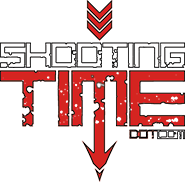Using a rangefinder while hunting can mean the difference between harvesting an animal of a lifetime and going home with an discouraging sick feeling due to a misplaced shot. A rangefinder is small, easily fits in a pocket, and can eliminate error when guessing yardage for an important shot. What is the best way to use a rangefinder in the field? Well lets look at a few different techniques.
Ranging the surroundings at the start of a hunt
With this method, a hunter will get to the treestand, set up, and start ranging landmarks. There is inevitable downtime while waiting for deer so preranging noticeable terrain features is productive. When you are in the stand, look for trees that you think are around 20, 30, and 40 yards. Range them with your rangefinder. If they are indeed within a yard or two or your pins yardage settings (20,30,40), commit them to memory. If you have a mental yardage map, you may not need to use your rangefinder while the animal is approaching, increasing your chance of success. This is handy during the more aggressive stages of the rut when deer move a little quicker.
Using a rangefinder when an animal is approaching
This method of ranging animals demands the most skill. You have to be surgical with your movements in order not to be detected.
Usually, the sequence is as follows:
- A deer is spotted.
- The deer’s path of travel is predicted.
- While holding the bow, the hunter grabs the rangefinder, ranges the anticipated shooting area, and returns the rangefinder to his/her pocket.
- If the deer stays on course, the shot is taken with an accurately ranged shot resulting in success.
This method is good if no preranging was possible or a sub par memory could not retain preranged yardages.
Premarking yardages on trees
If you have a set treestand location, and have permission to do so, you can make yardage markings on your surroundings. This is by far the most convenient way to establish yardages while hunting. Depending how you want your marks to blend in with the environment, you can use colored ribbons, colored tacks, or black spray paint. These marking techniques should be done at least a month before the hunting season begins.
Use the following technique to mark your surroundings:
- While standing in your treestand, range your surroundings for trees or other markable objects that are at the same yardages as your pins.
- Have a friend mark those objects with your ribbons, tacks, or paint.
- Repeat the process in all likely areas where you could get a shot at a deer; Be sure to mark as far as you are comfortable shooting.
If you are using the more visible ribbons, you can match them to the pin color for that yardage. The same applies when using colored tacks.
If you are going to use black spray paint, we suggest using the dot and line method. Using this method, you would spray 2 noticeable dots high on a tree for a 20 yard tree, 3 for 30, 4 for 40 and so on. If you have to mark a tree that’s in between these yardages, say at 25 yards, spray the two dots and a line. The line will signify +5 yards.
We suggest the black spray paint technique. It blends in well to the environment and is noticeable to the hunter using them. If done properly, the hunter using this technique will not have to fumble around with a rangefinder while an animal is approaching and can concentrate more on shot execution.
Summary on using a rangefinder while hunting
We owe it to the animal to take a properly ranged shot. The goal is to hit the vitals and harvest the animal without inflicting unnecessary pain and suffering due to a bad shot. Use a rangefinder. Remember that even the best 3D shooters can guess yardages wrongly, especially while up in a tree. While elevated, you see more terrain and can be tricked into thinking an animal is further than it actually is. Eliminate the guesswork! Use a rangefinder along with one of our suggested techniques and watch your success rates go up! Good luck!
